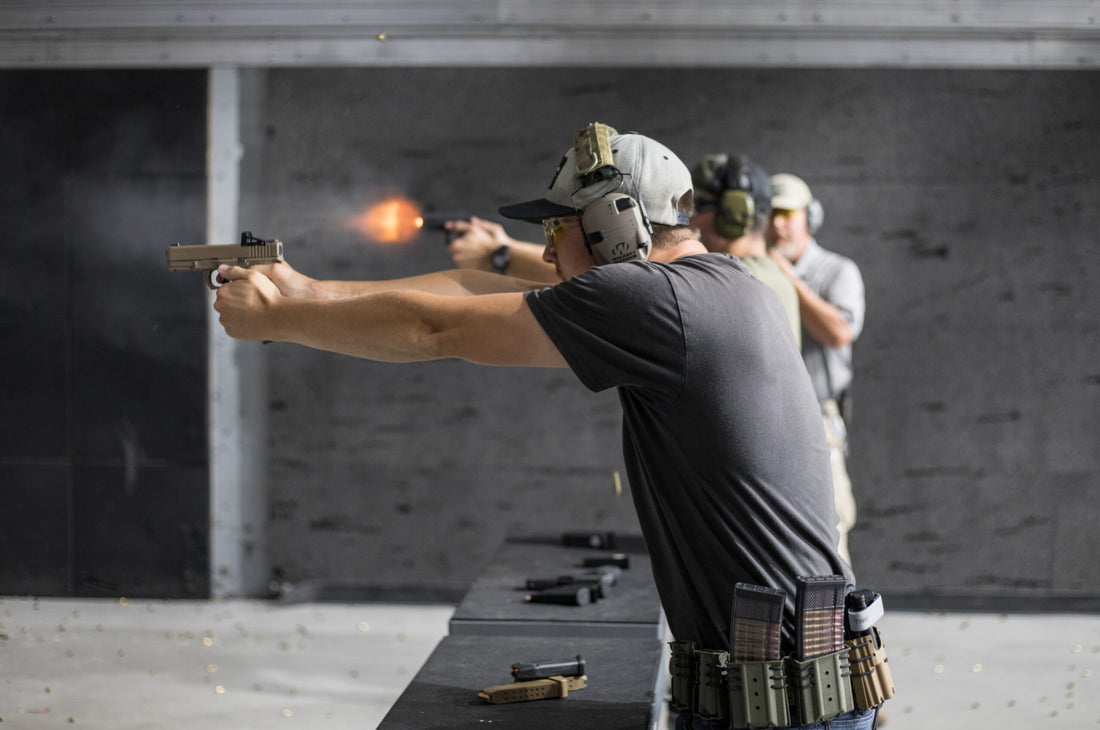
Handgun Training
Share
Mastering the Art of Handgun Training: A Guide to Safety and Precision
In today's world, understanding how to responsibly handle a handgun is not just a skill but a critical aspect of personal safety and proficiency. Whether you're a seasoned gun owner or a newcomer to firearms, proper training is indispensable. Let's explore the essential elements of handgun training that ensure both safety and mastery.
The Importance of Proper Training:
Owning a handgun comes with significant responsibilities. Beyond knowing how to operate the firearm safely, understanding legal implications, and practicing good judgment, training provides the foundation for confidence and competence. It's not just about hitting targets accurately but also about developing a mindset of safety and respect for firearms.
Finding a Qualified Instructor:
One of the first steps in handgun training is finding a qualified instructor or training facility. Look for certifications from reputable organizations like the National Rifle Association (NRA) or local law enforcement agencies. A good instructor will emphasize safety protocols, teach proper handling techniques, and guide you through both theoretical and practical aspects of firearm use.
Understanding Safety Protocols:
Safety should always be the top priority when handling a handgun. Training will instill in you the importance of treating every firearm as if it were loaded, keeping your finger off the trigger until you're ready to shoot (the golden rule of firearms handling), and knowing your target and what's beyond it. These protocols are not just rules but habits that can save lives.
Mastering Shooting Techniques:
Handgun training covers a range of shooting techniques designed to improve accuracy and control. This includes proper stance, grip, sight alignment, and trigger control. Through repetitive practice and expert guidance, you'll learn to maintain consistency in your shooting and understand how minor adjustments can significantly impact your accuracy.
Developing a Defensive Mindset:
Beyond marksmanship, handgun training often includes scenarios that simulate real-life situations where you might need to defend yourself. This aspect of training helps develop a defensive mindset, teaching you when and how to use your firearm responsibly in critical situations. Mental preparedness and decision-making under stress are crucial components of this training.
Continuing Education and Practice:
Handgun training is not a one-time event but a continuous process. Even after completing a basic course, ongoing practice is essential to maintain and improve your skills. Regular visits to the shooting range, participation in advanced courses, and staying updated on legal changes and safety best practices are all part of responsible handgun ownership.
Conclusion:
Mastering handgun training goes beyond just hitting bullseyes—it's about developing a deep understanding of firearm safety, honing critical defensive skills, and maintaining a high level of proficiency through continuous practice. Whether you're a recreational shooter or someone who values personal protection, investing in proper training ensures that you're equipped to handle your firearm safely and effectively.
Remember, responsible gun ownership starts with education and ends with proficiency. By seeking out qualified instruction, adhering to safety protocols, and dedicating yourself to ongoing practice, you can confidently navigate the world of handguns while prioritizing safety every step of the way.
